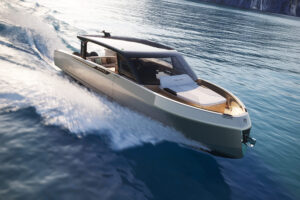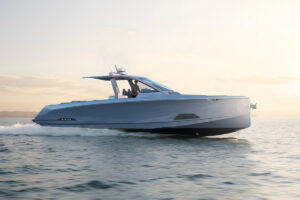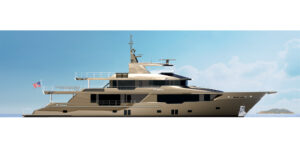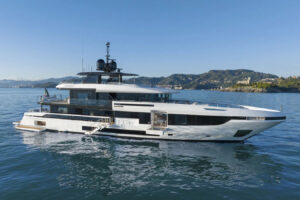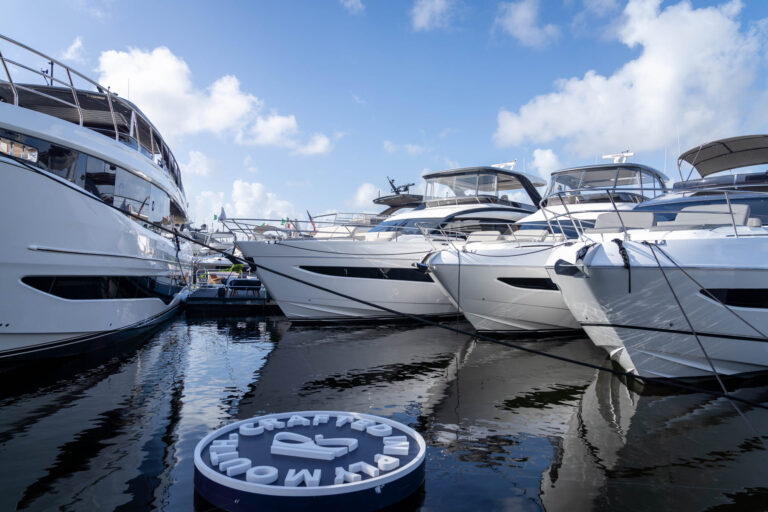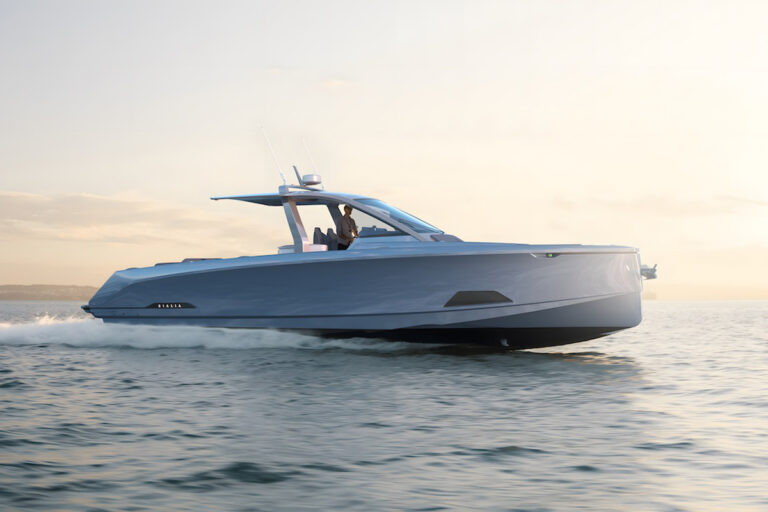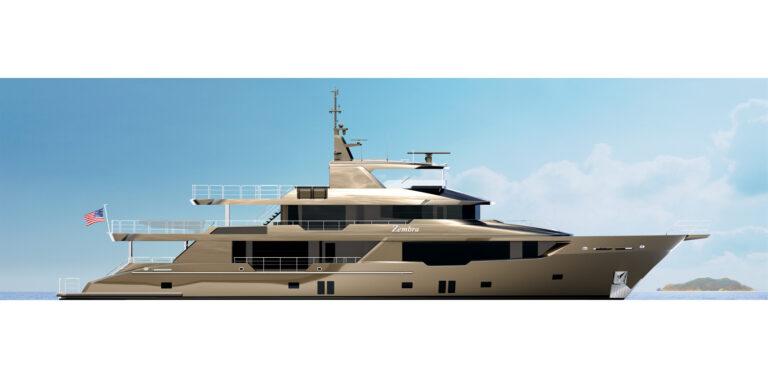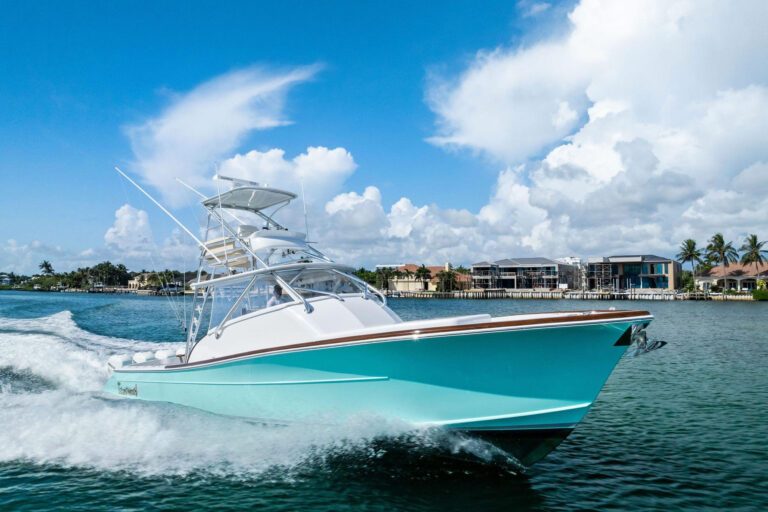
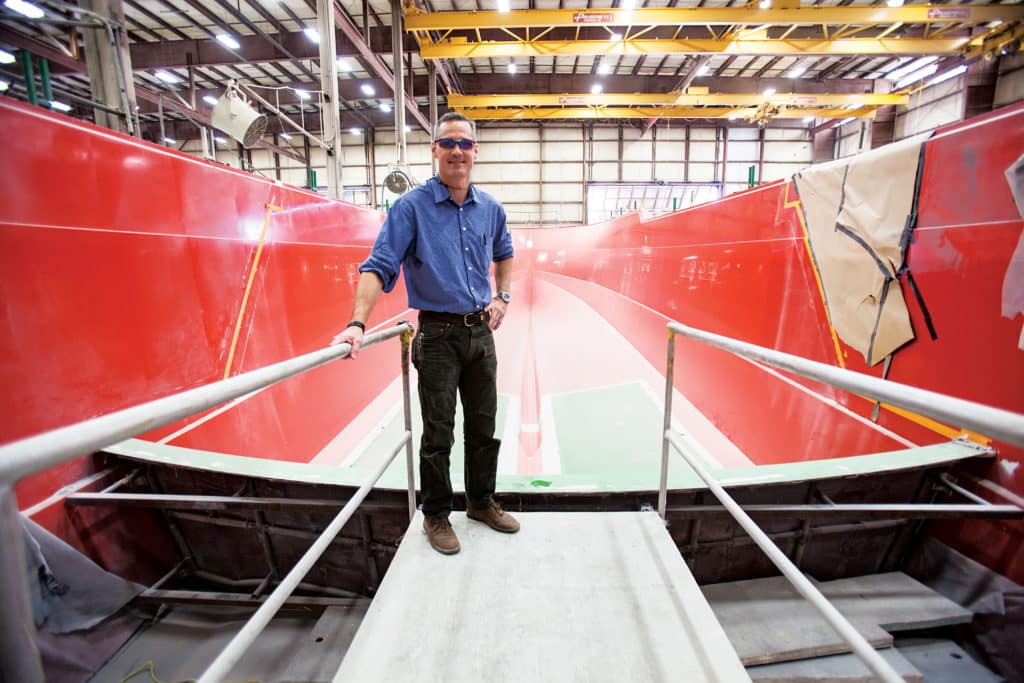
Pedigreed
I first saw the photograph as a kid while snooping around a neighbor’s workshop hard by Barnegat Bay, New Jersey. A classic Orvis fly rod was too pretty not to handle — I picked it up and started a chain reaction that would make Rube Goldberg proud. When the dust settled, amid the scattered fishing gear was the January 1970 issue of Yachting. Its cover model was blasting through the sea on her milky-white hull. Marine photographer Peter Barlow had captured the Hatteras 50 in her element, running hard and fast. I was awestruck.
About 12 years before Barlow had snapped the shutter, a nor’easter had grounded Willis Slane and his fishing buddies yet again in North Carolina’s Outer Banks. Looking at the storm blowing stink off Diamond Shoals, Slane reportedly told his cronies, “One day, somebody will make a boat that can handle these types of conditions, and we’ll be able to fish instead of having to sit here and play cards.”
The men carefully folded their cards on the table and looked at Slane expectantly.
Aw hell, he must have thought, catching the unmistakable expressions on their faces. I’ll do it.

Slane enlisted a relatively new yacht designer, Jack Hargrave, to draw the first vessel. Now a storied name in boat design, Hargrave had just graduated from Westlawn Institute of Marine Technology and was designing sport-fishing vessels for the Rybovich yard. Hargrave took elements of Rybovich design — a large cockpit, flybridge and raised foredeck for larger belowdecks accommodations — and incorporated them on the first Hatteras, the 41-foot, all-fiberglass Knit Wits. The response established Hatteras Yachts as a noted builder of fiberglass convertibles. A battlewagon legacy was born.
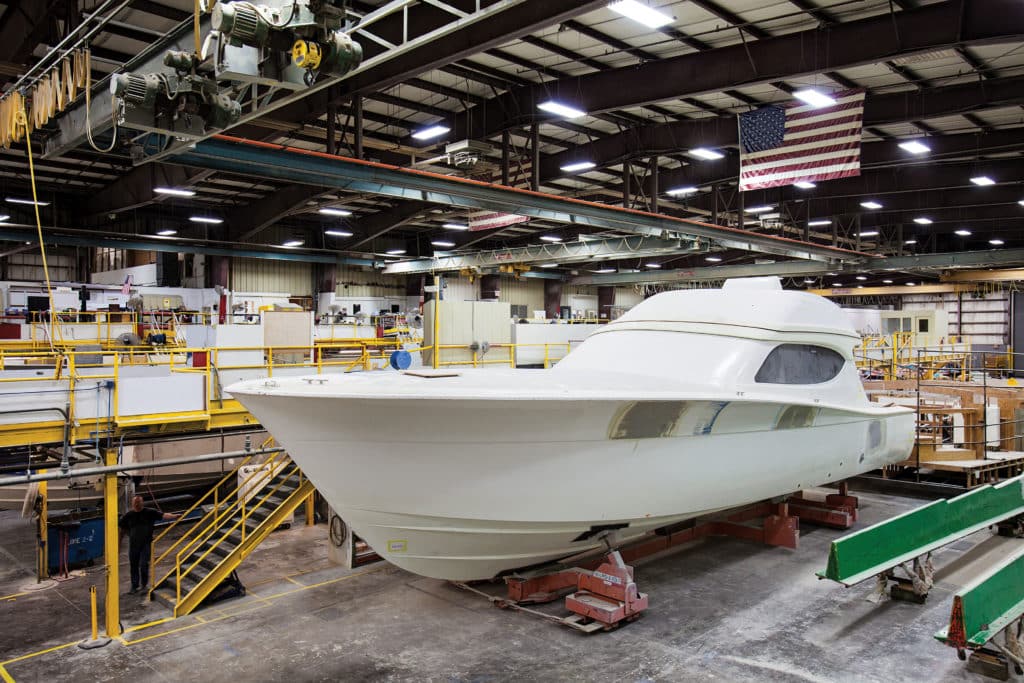
The people behind such iconic vessels are as exemplary as the yachts. Hatteras was fortunate to have Slane and Hargrave at the helm when the brand launched in 1959; both were later essential to the company’s growth. Today, the Hatteras staff includes master craftsmen with 30 or more years of tenure, and a few have been with Hatteras for more than 45 years. “The tremendous knowledge and skill set is unmatched [in the industry],” says Jonathan Ward, president of Hatteras. “The single thing that defines the brand is our employees.”
Next to Hargrave, Bruce Angel’s time at Hatteras is just as impactful. In 1976, his shop was next door to Hatteras Yachts’ original facility in High Point, North Carolina (the company built its plant in New Bern in 1967, running both for a while). Intrigued by a 53-foot convertible, Angel wandered over. Hatteras hired him as a mechanical engineer, and he “was bitten by the bug very early.” Working with Hargrave, he began to learn about naval architecture, eventually earning a degree. He’s currently executive vice president of product development and engineering at Hatteras.

For many years, Hargrave created all of the vessels — drafting variable-deadrise hulls with a sharp entry that became known for their seakeeping abilities — while Angel assisted and thought about other ways to improve the ride.
“One of the major innovations was in the propulsion,” he says. “I was looking more at the science of propeller design and began to get interested in reduction gears. They [both] seemed too conveniently simple.”
With the advent of the modern diesel engine, the boats got bigger and heavier — and noisier. To reduce noise and increase performance, Angel cited an obscure source for inspiration: a 1955 paper written by two professors who had dismantled a World War II-era German cavitation tunnel. Through tank testing, real-world applications and a close relationship with Rolla propellers — “tell me what you need” was Rolla’s credo, Angel says — Hatteras began to order props with five to eight blades each. Combined with deeper gear ratios custom cut by ZF, the result was “a quantum leap in terms of technology [with] a 2-knot increase in top speed,” he says, and a significant reduction in vibration. By the early 1990s, Hatteras was employing these props on all of its vessels. A few years later, multiblade props and deep gear ratios had become the norm on battlewagons.

All Hatteras models are tank tested, but it’s often the homespun techniques that drive improvement. Angel says a cracked housing during a test with a simple air pump led to the builder’s patented hull- tunnel air-induction system. It creates a blanket of air between the prop and the hull bottom, and the blade’s shock wave collides with it. Less cavitation equals reduced vibration and noise, and increased performance. The feature is found on every Hatteras Yachts’ sport-fish model today.
Angel says that in addition to Hargrave, renowned naval architect Donald L. Blount was a mentor and visited annually. “We really thought we had something [with the tunnel air-induction system], and Donald didn’t say anything about it,” Angel recalls. “I was disappointed.” Blount later said he was blown away by the design because something similar was used on the U.S. Navy’s high-speed cruisers and nuclear-sub fleet. Later, Hatteras fielded calls from Annapolis when the military had issues with its patrol boats.
Hatterascal
There’s no greater sales tool than getting potential customers out on the water for a day of running down big fish. Hatterascal is the demo vessel that “gets them into the Hatteras brand,” says Jeff Donahue, Hatteras Yachts director of product improvement and Hatterascal captain. Donahue says the day of fishing benefits the builder as well; input from serious customers helps to refine the GT Series. “It’s a great learning tool,” he says. “We learn what we need to improve upon and what we may need to change.” The current Hatterascal is a GT70 fitted with every conceivable option, including 2,600 hp MTU diesels. She’s also the Hatteras factory fishing team vessel. This summer, she’ll hit several tournaments along the East Coast and the Bahamas. Stop by and say hi on the docks — she’ll be hard to catch on the water.
Such innovative thinking helped to evolve the Hatteras brand and its reputation, but the company’s core values remain the same today as they were in 1959. Ward says: “The brand hasn’t changed what it’s stood for. Quality, safety and durability never go out of style.” Ward has 25 years in the marine industry and has been with Hatteras since 2011. “Not a lot of brands have stood the test of time,” he says. “There are a couple of iconic brands that have been there decade in and decade out, and Hatteras is one of them.”
The builder faces new challenges today: hiring employees to replace the veteran boatbuilders, and having those masters impart their knowledge. Hatteras has proven that it’s able to adapt, and the product line continues to innovate [see “Big and Fast” sidebar]. Now a semicustom builder, Hatteras Yachts is poised to compete with custom builders and production yards by doing the same thing it’s always done: building the best possible vessels through innovation and hands-on craftsmanship.
Big and Fast: Carolina’s Gran Turismos
The convertible sport-fish customer has a need for speed. Simply put: You must be in the 40-knot range to compete with the custom-built pelagic pugilists. Hatteras Yachts answered with its GT Series. Ranging from 54 to 70 feet, the GT line is designed to run at 40-knot speeds with a mid-30-knot cruise. The GTs are the builder’s first totally resin-infused hulls, which saves weight, although the boats retain a sturdy, solid-fiberglass hull bottom common to all Hatteras models. Inspired by her home state — with Carolina bow flare, handsome tumblehome and a pod-style helm on her flybridge — the Hatteras GT is at once sleek and imposing. The modified-V hull form and sharp entry ensure plenty of giddyap from the hole; lifting strakes and double chines promise a dry ride. Prop tunnels help create lift while backing down on big fish, keeping the cockpit dry. The GTs also have PipeWelders tuna towers, carbon fiber hardtops (on the convertibles), mezzanine decks and commodious cockpits ready for big-fish battles.

